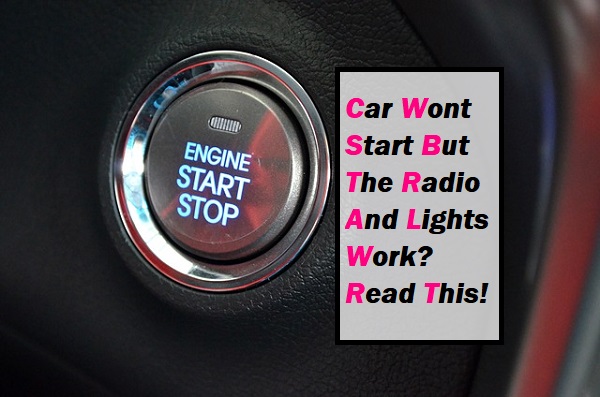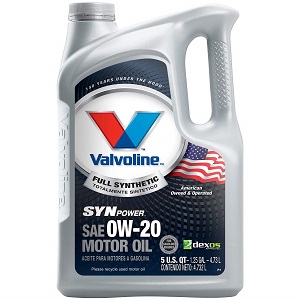The oil in a vehicle is the lubricant for the engine. It’s important to make sure that you have the right amount of oil in your vehicle in order for it to run its best.
If there is too little oil there is not a sufficient amount of lubricant for the engine, which can lead to it burning out.
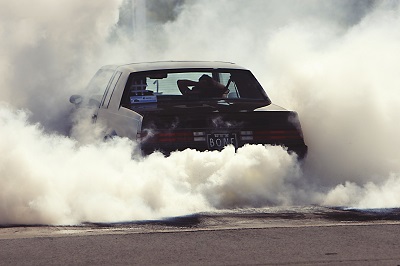 If there is too much oil in a car, it can be churned into a thicker, foamy substance, which can work its way into parts of the engine where it shouldn’t. Too much oil can also cause low oil pressure, which is something you’ll want to avoid.
If there is too much oil in a car, it can be churned into a thicker, foamy substance, which can work its way into parts of the engine where it shouldn’t. Too much oil can also cause low oil pressure, which is something you’ll want to avoid.
Too much or too little oil can lead to all sorts of problems with your car making repairs a certainty. For this reason, it is important to check the oil levels of your car regularly.
As it’s so important, everyone should be able to check the oil of their vehicle.
The best way to measure the amount of oil in a vehicle is to use the dipstick that is located under the hood.
A dipstick is a long thin rod that shows how much oil is in the car. It is a good idea to check the oil of your vehicle every time you fill up the gas tank, if you can.
How To Check Your Oil Level
- First, you will need to make sure that your car is parked on a level surface. You don’t want an uneven surface distorting the results.
- Next, look at your owners manual to see if you should check the oil when the engine is warm or cold.
- If it recommends a cold engine check, do not start the car. If a warm engine is recommend, start the car for a few minutes or check the oil right after you have driven it for a while.
- Third, you will need to open up the hood of your car and locate the oil dipstick. In most cases it will have a small handle that says oil on it.
- Grab the handle and pull it out. Once you have the dipstick out, take some tissue and remove any traces of oil so that you’ll get a clean reading. You then need to put it back in the cylinder as far as it will go.
 Once satisfied that you’ve reinserted it correctly, remove the dipstick and examine it on both sides to determine how much oil is in the vehicle.
Once satisfied that you’ve reinserted it correctly, remove the dipstick and examine it on both sides to determine how much oil is in the vehicle.- There are lines on the dipstick that show the recommended oil levels.
- If the oil level is above the minimum line and below the high line, it is fine.
- If it is very close to the minimum line you should consider topping it up.
- Once you’ve checked the oil level simply return the dipstick to its cylinder and make sure that it is inserted fully.
Signs of Too Much or Too Little Oil
There are several tell-tale signs that your car will make if the engine has too much or too little oil.
One sign to look out for is a white/grey exhaust smoke. If there is a thick white smoke coming out of the exhaust pipe it could mean that the engine is getting too much oil. If this is the case it is important to take your car to a mechanic as soon as possible in order to minimize the risk of long term damage to the engine.
White smoke is often an indicator that something is burning inside the engine. It may or may not be the oil. However, if the oil is mixing into the foamy substance mentioned earlier, this could start to burn, which will cause the smoke.
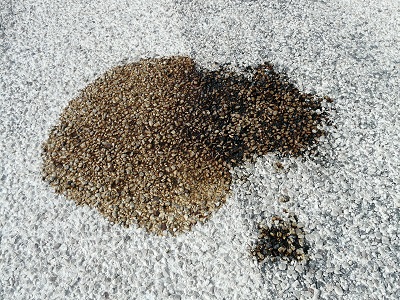 Another thing to look out for is an oil leak. Oil is often spilled when it is added to the engine, so if you find a small patch of oil in the same place that you topped it up it probably won’t be too big a deal.
Another thing to look out for is an oil leak. Oil is often spilled when it is added to the engine, so if you find a small patch of oil in the same place that you topped it up it probably won’t be too big a deal.
However, if the oil is found under the car in a completely difference location to where you topped the oil up last, there may well be a leak.
You should first check the oil plug located under the vehicle to make sure that there isn’t a leak there too. If the oil plug is not tightened correctly oil may not be coming from the engine, but simply draining out of the bottom.
If that is what is happening your vehicle is going to run out of oil pretty quickly, which, as you’d imagine will lead to a number of quite serious problems.
Check outthis interesting discussion on symptoms of too much oil in a car.
Problems Caused by Too Much Oil In Your Car
When most people think about the oil in their vehicle they worry about not having enough. However, adding too much oil can create problems as well.
When there is too much oil in the engine there is no place for it to go. And in these circumstances, when it’s turned it can fill with air, turning it foamy. Oil that has air in it does not function as well as an oil of a smoother consistency, which can cause overheating and may severely damage the engine.
Overflowing oil from the engine may also cause damage to different gaskets and seals as the oil is forced from the engine.
When these gaskets and seals start to fail, oil leaks may develop. This can leave stains on your driveway and cause the oil levels of the vehicle to become too low, which can cause more damage to the engine.
As you can tell, the knock-on effects of having too much oil are considerable. Blown gaskets and seals need to be identified and then repaired as soon as possible.
Another issue that is caused by too much oil is that it could be forced through the seals and rings of the pistons. This could result in your engine being coated in oil, which is not want you want.
When that oil starts to burn off it could release dangerous fumes. It may also create a fire hazard if the oil find its way to the outside of your engine.
Removing Excess Oil
Here’s a great video to show you how to change the oil in your car:
And here’s a handy step-by-step guide:
- If there is too much oil in the engine, it is important to remove the excess in order to prevent the damage that it may cause.
- The first step to removing excess oil is to turn the vehicle off and open up the hood.
- Put an oil pan under the car and then undo the drain plug and let all of the oil drain into the pan.
- When you’re happy that oil if the oil has drained out screw the drain plug back in.
- Then remove the cap on the engine that says oil and place a funnel in the hole.
- You then need to pour the drained oil into the funnel, but make sure that you don’t use all of it!
- Check the amount of oil using the dipstick by following the steps set out above.
- Then place the cap back on the engine and close up the hood.
- That is all there is to it.
- You can pour the extra oil into a container and use it for your next oil change.
***It is important to make sure that your engine is cool when you are performing this task.***
Having too little or too much oil in the engine can cause many issues with your vehicle.
It is important to make sure that you change the oil frequently and that you check the oil levels often as this will keep your engine running smoothly for a longer time.
Have you had a problem with too much oil in your car? Or not enough?
Let us know what you did to fix it below.
Having trouble with an oil leak? Check out our review of Blue Devil Oil Stop Leak Here.
Or are you looking for a good motor oil for cold weather? Check out our guide to the best 0w 20 synthetic oils around right now.
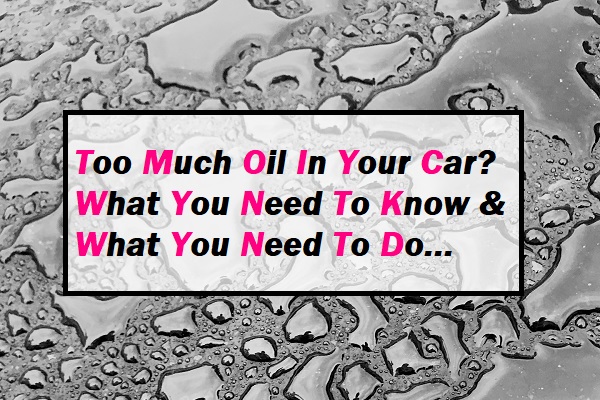

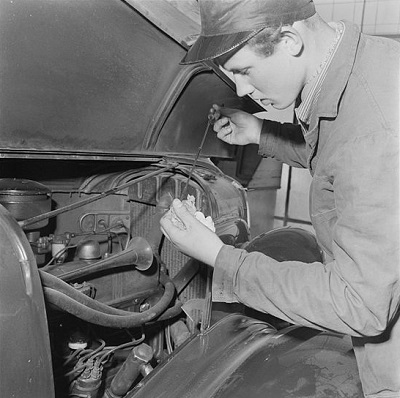 Once satisfied that you’ve reinserted it correctly, remove the dipstick and examine it on both sides to determine how much oil is in the vehicle.
Once satisfied that you’ve reinserted it correctly, remove the dipstick and examine it on both sides to determine how much oil is in the vehicle.